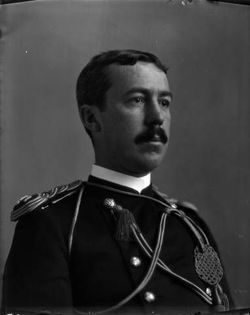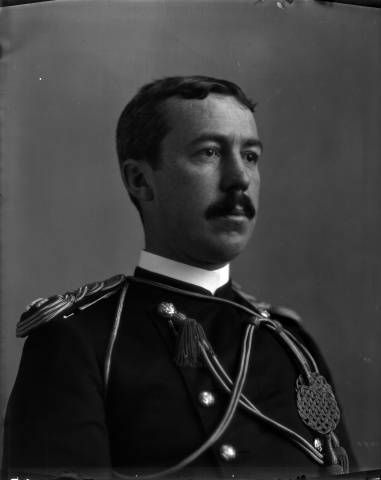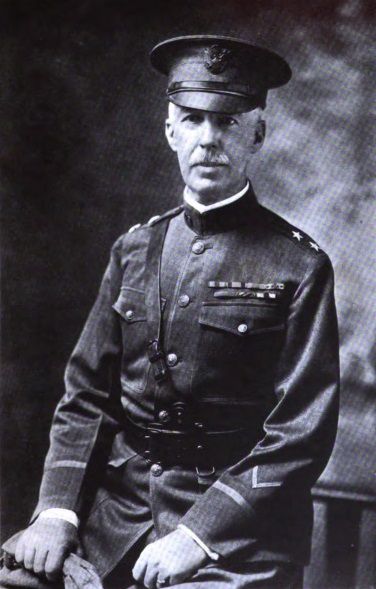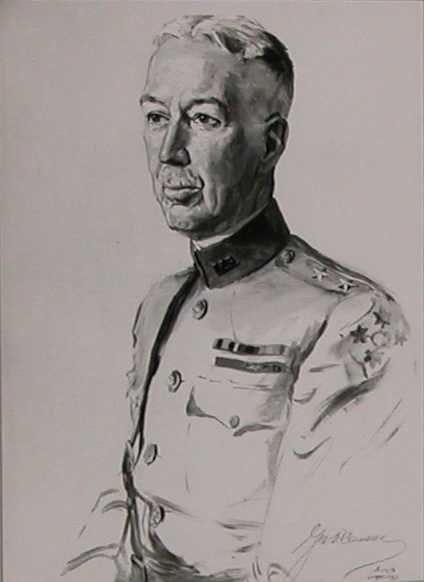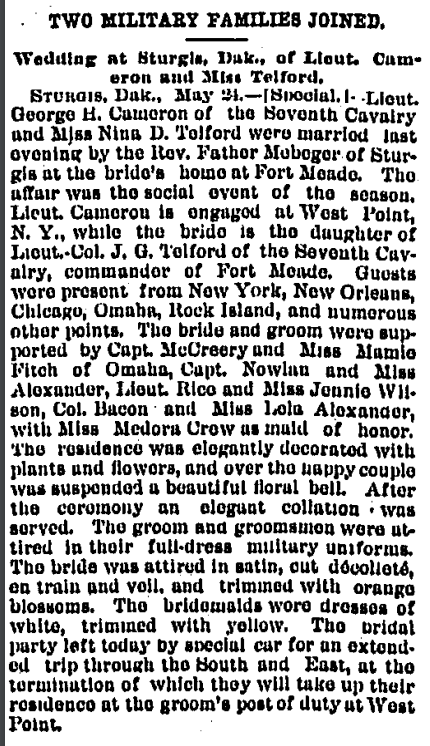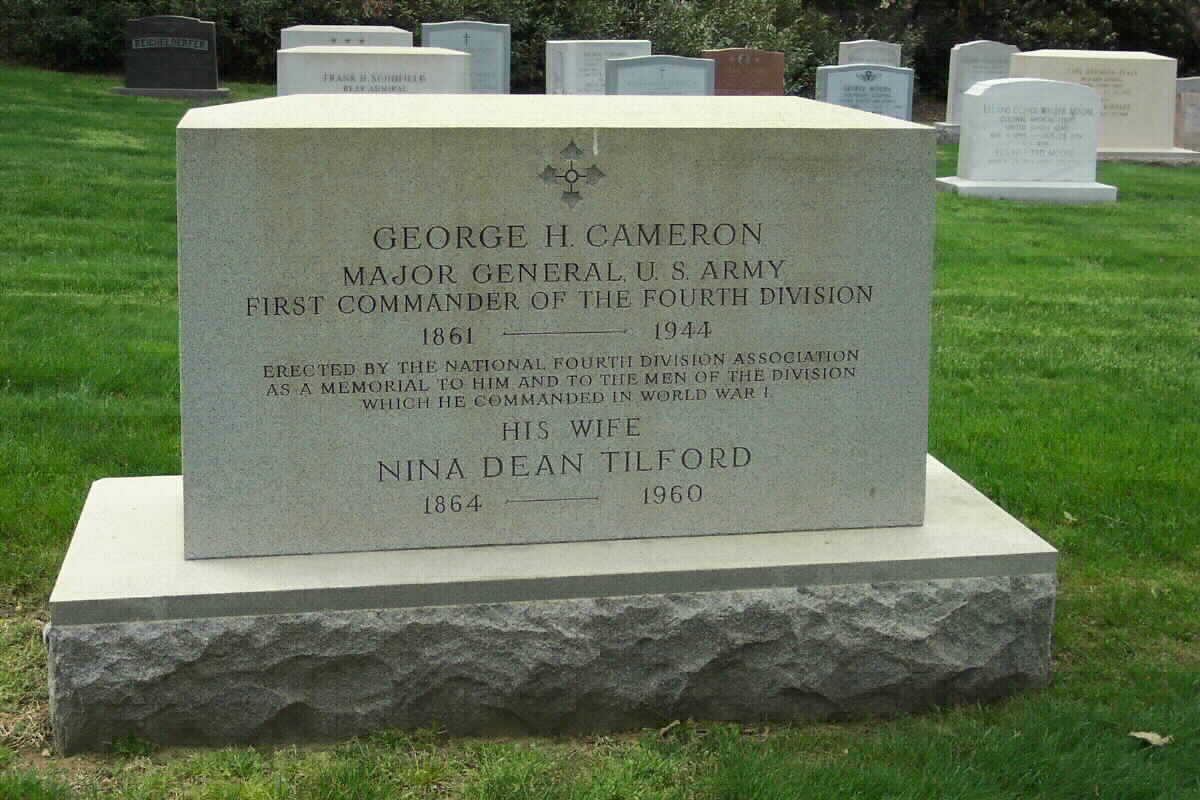"On November 19, 1917, the same year that America entered World War I, the 4th Infantry Division was formed at Camp Greene, North Carolina to begin its long tradition of service to our country. Filled with draftees, the Fourth Division, whose insignia had been adopted by its first commanding general, Major General George H. Cameron, became known as the "Ivy" division. Its insignia consisted of four green ivy leaves joined at the stem and opening at the four corners of a square on a khaki background. The Division also derived its numerical designation from the Roman numeral IV, hence the nickname "Ivy" division. Also, in the language of flowers, ivy means "Steadfast and Loyal" - the division's motto.
In April 1918, the Ivy Division's Doughboys embarked aboard a number of ships - all 29,180 officers and men - enroute to fight in France. The first casualties of the division were suffered as the ship carrying men of the 58th Infantry Regiment was hit by a German torpedo, killing 56 men. After a brief layover in England, the Ivy division landed at Calais, Bordeaux, and Brest enroute to the front lines.
By mid-June the mighty Aisne-Marne campaign was shaping up and the Ivy Doughboys were sent to bolster the French 6th Army. Unbeknownst to the men of the Division, their movements were beginning to create a historic precedent and by the time the "great war" would end some months hence, the Ivy Division would serve with distinction - as the only American combat force - with both the French and the British in their respective sectors.
When the war ended on November 11, 1918, the Ivy Division had earned battle streamers with the names of Aisne Marne, St. Mihiel, Meuse Argonne, and Defensive Sector emblazoned on them. A price had been paid - 69 officers and 2,000 men killed in action and total casualties of killed and wounded added up to 499 officers and 13,150 men. The Ivy Division had fought and defeated sixteen enemy divisions. Nine days after the end of the war, the Fourth Division marched into Germany to undertake occupation duties; and it wasn't until August 1919 that the Ivy Division's Doughboys returned to the United States. France had been the Division's first battlefield. A generation later, a new breed of Ivy Division soldiers would again fight in France."
More at http://www.arlingtoncemetery.net/ghcameron.htm
"On November 19, 1917, the same year that America entered World War I, the 4th Infantry Division was formed at Camp Greene, North Carolina to begin its long tradition of service to our country. Filled with draftees, the Fourth Division, whose insignia had been adopted by its first commanding general, Major General George H. Cameron, became known as the "Ivy" division. Its insignia consisted of four green ivy leaves joined at the stem and opening at the four corners of a square on a khaki background. The Division also derived its numerical designation from the Roman numeral IV, hence the nickname "Ivy" division. Also, in the language of flowers, ivy means "Steadfast and Loyal" - the division's motto.
In April 1918, the Ivy Division's Doughboys embarked aboard a number of ships - all 29,180 officers and men - enroute to fight in France. The first casualties of the division were suffered as the ship carrying men of the 58th Infantry Regiment was hit by a German torpedo, killing 56 men. After a brief layover in England, the Ivy division landed at Calais, Bordeaux, and Brest enroute to the front lines.
By mid-June the mighty Aisne-Marne campaign was shaping up and the Ivy Doughboys were sent to bolster the French 6th Army. Unbeknownst to the men of the Division, their movements were beginning to create a historic precedent and by the time the "great war" would end some months hence, the Ivy Division would serve with distinction - as the only American combat force - with both the French and the British in their respective sectors.
When the war ended on November 11, 1918, the Ivy Division had earned battle streamers with the names of Aisne Marne, St. Mihiel, Meuse Argonne, and Defensive Sector emblazoned on them. A price had been paid - 69 officers and 2,000 men killed in action and total casualties of killed and wounded added up to 499 officers and 13,150 men. The Ivy Division had fought and defeated sixteen enemy divisions. Nine days after the end of the war, the Fourth Division marched into Germany to undertake occupation duties; and it wasn't until August 1919 that the Ivy Division's Doughboys returned to the United States. France had been the Division's first battlefield. A generation later, a new breed of Ivy Division soldiers would again fight in France."
More at http://www.arlingtoncemetery.net/ghcameron.htm
Family Members
Sponsored by Ancestry
Advertisement
Advertisement
